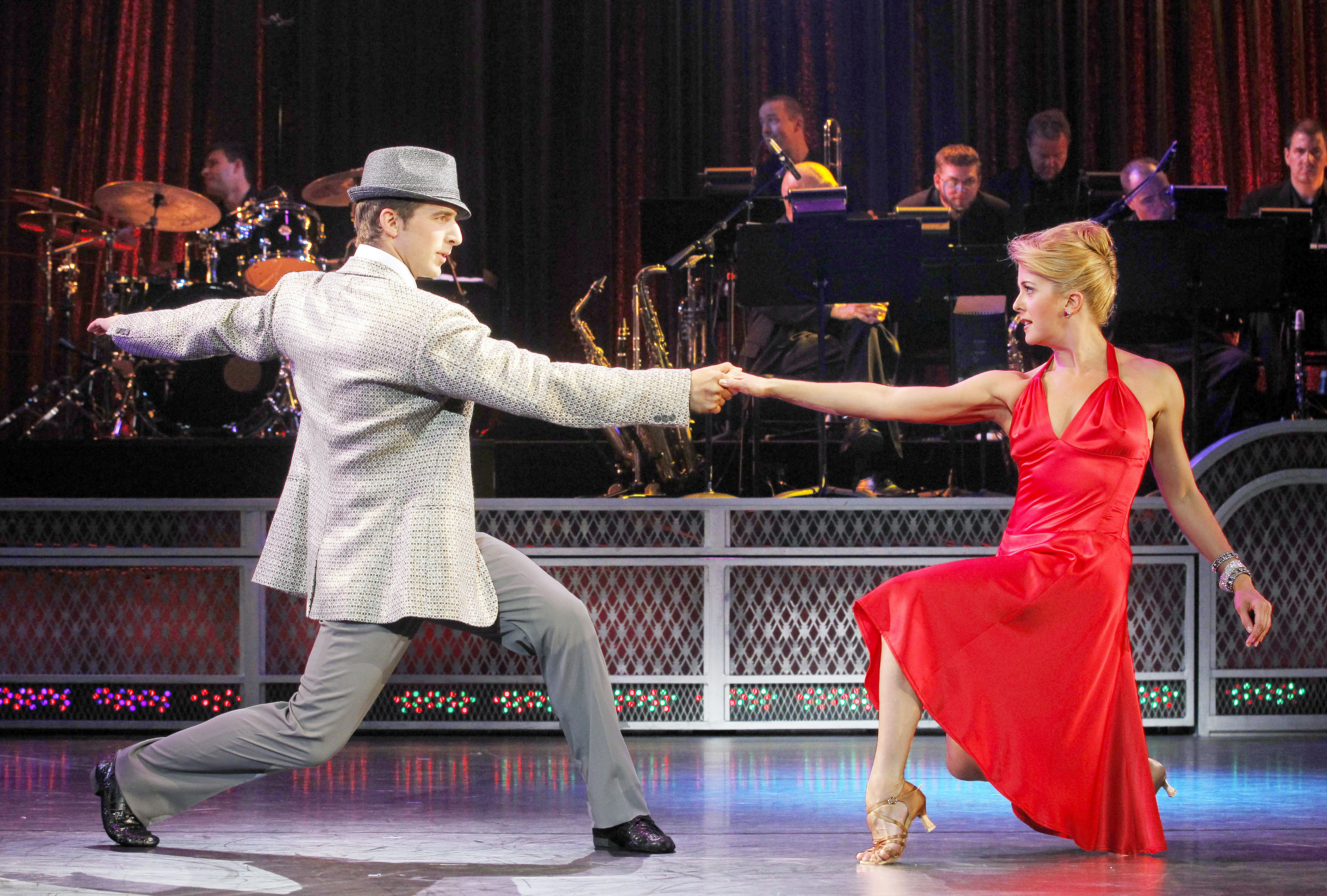It requires skill to tell a story without speaking. However, the Pantages Theatre’s latest musical “Come Fly Away” attempts just that.
The 80-minute Broadway musical, directed and choreographed by Tony Award-winner Twyla Tharp, expresses a tale of intersecting heartache and romance told entirely through dance, with dancers accompanied only by a live jazz band and the soaring vocals of Frank Sinatra.
The show elegantly fuses ballroom, swing and contemporary dance styles that are beautifully executed to capture the emotion of Ol’ Blue Eyes’ classic songs, including standouts such as “Luck Be a Lady,” “Fly Me to the Moon,” “That’s Life” and “My Way.”
Four couples dominate the performance, which is set in the confines of a seductive, low-lit night club over the course of a single New York evening. The couples communicate nearly every stage of a relationship, dancing to the flirtations of first love, jealous love triangles and desire.
The performance does not lack passion, and dance pairs express an electric chemistry that flows seamlessly between song numbers and partner switches. Intricate flips and lifts keep the performances energetic and serve to further accentuate the humor or romance of a given exchange. The deliberate tilt of the head or the lift of a leg thus carries the power to entirely alter the emotions conveyed.
Dancers wear vintage-inspired costumes that pay tribute to Sinatra’s heyday, with dapper fedoras and dramatic silken dresses reminiscent of the ’40s. Sapphire blue tones bathe the background, complete with intricate twinkling stars that illuminate the image of Sinatra himself during the closing numbers of the show.
Choreography is at the forefront of the production, and the dancers deliver a controlled athleticism with awe-inspiring lifts and leaps that keep the audience’s rapt attention. Likewise, the jazz band’s soulful saxophones and furious trumpets flawlessly complement both the dancing and Sinatra’s vocals.
It seems strange, however, to classify a performance as a “musical” without any actual live singing or dialogue. The result leaves a flurry of dance numbers revolving around the drama of relationships, but the message only goes so far. Though entertaining, the vignettes fail to portray a clear narrative or resolution. And though certain couples reappear throughout, the musical becomes frenzied at points. Ultimately, the final “New York, New York” club scene that audiences are left with isn’t too far removed from the musical’s “Luck Be a Lady” opening.
Dances begin as playfully sassy interpretations of Sinatra’s songbook but become increasingly sensual in theme as the show continues.
Several later numbers include barely there lingerie costumes and borderline risque onstage clothing removal that Sinatra himself might have blushed at the sight being set to his music. In the end, these choreography choices seem inappropriate toward illustrating the couples’ after-hours romance.
Quite simply, the musical is falsely billed. “Come Fly Away” is a dance tribute to Frank Sinatra. And while the talented dancing and music offer solid entertainment and appealing illustrations of Sinatra’s music, the performance would be better served if it wasn’t afraid to just say so.
